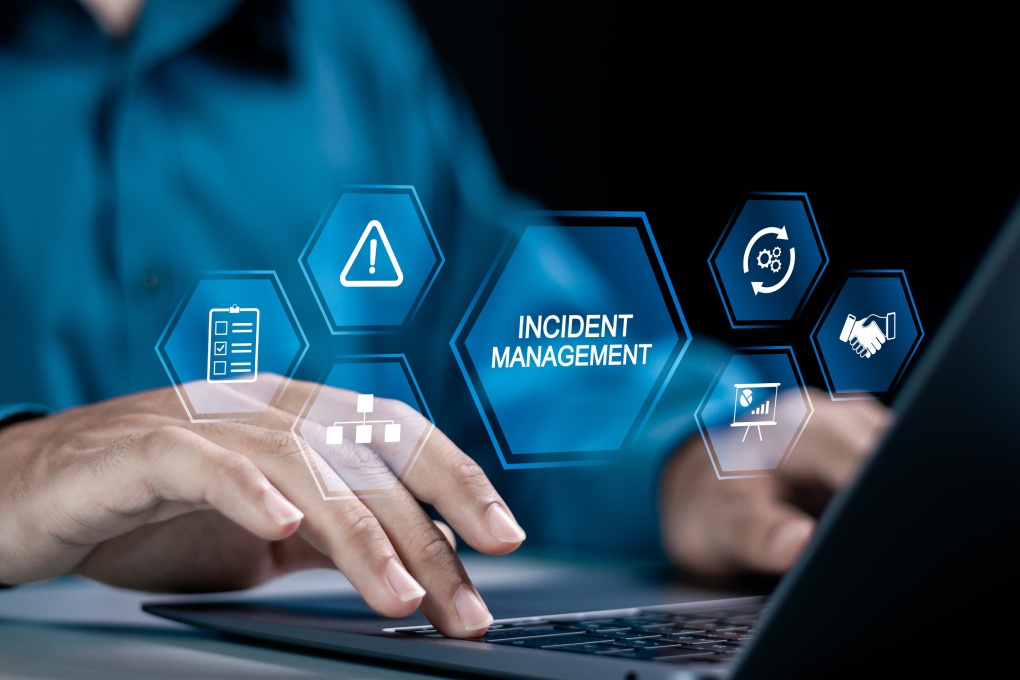2025 Guide to IT Security Compliance for Small Businesses
IT security compliance is more than following a set of rules in order to avoid legal trouble. It is a foundational step in protecting sensitive information and maintaining customer trust. Known as the practice of ensuring that an organization’s data management practices align with all relevant legal, regulatory, and ethical requirements, IT compliance is also the way to allay Americans’ fears for the safety of their data. What follows is a guide to maintaining compliance as a small business in 2025, and beyond.
The Importance of Data Privacy and Security in 2025

Americans are becoming increasingly concerned about the safety of their data. Recent statistics indicate that more than 90% of Americans worry about how their data is collected and used online.
This growing awareness has led to the introduction of stringent data protection laws such as the General Data Protection Regulation (GDPR) in Europe and the California Consumer Privacy Act (CCPA) in the United States. These regulations have significantly shaped compliance requirements, mandating businesses to implement strong data protection measures and providing individuals with greater control over their personal information.
The risks of non-compliance can be severe, including legal, financial, and reputational consequences. For instance, violations of HIPAA regulations can result in penalties ranging from $100 to $50,000 per violation, with a maximum annual penalty of $1.5 million. Beyond financial repercussions, data breaches resulting from non-compliance can lead to loss of customer trust and significant damage to a company’s reputation.
As cyber threats continue to evolve and new technologies emerge, compliance regulations are constantly adapting. Small businesses must stay informed about these changes and regularly update their compliance strategies. By 2025, we can expect to see even more comprehensive data privacy laws, including the potential introduction of the American Privacy Rights Act. Staying ahead of these evolving regulations will be crucial for small businesses who wish to effectively protect their digital assets.
Key Compliance Standards and Regulations
Building on the importance of understanding compliance regulations, let’s explore key standards that small businesses need to be aware of in 2025. Several major compliance frameworks have global implications, even for small enterprises.
GDPR
The General Data Protection Regulation (GDPR) is a comprehensive law that applies to any organization handling EU citizens’ data, regardless of the company’s location. For small businesses engaging in international commerce, GDPR compliance is required if they wish to avoid hefty fines.
HIPAA
In the healthcare sector, the Health Insurance Portability and Accountability Act (HIPAA) sets national standards for protecting sensitive patient information. Small medical practices and health-tech startups must remain HIPAA compliance if they wish to protect patient data and maintain patient trust.
PCI DSS
For businesses handling credit card transactions, the Payment Card Industry Data Security Standard (PCI DSS) will control much of the way in which they handle customers’ sensitive financial data.. This standard helps prevent fraud and protects cardholder data, applying to any organization processing card payments, regardless of size.
Industry-Specific Regulations
Industry-specific regulations also play a crucial role in shaping compliance strategies. For instance, financial institutions must adhere to the Sarbanes-Oxley Act (SOX), while defense contractors need to comply with the Cybersecurity Maturity Model Certification (CMMC).
Looking ahead, the proposed American Privacy Rights Act of 2024 (APRA) could revolutionize data privacy in the U.S., potentially providing a federal standard similar to GDPR]. Small businesses should stay informed about this development, as it may require significant adjustments to data handling practices.
Implementing Effective Compliance Strategies
If you do not have strategies in place to keep your business in compliance with IT regulations, take these steps as soon as possible to put those strategies in place.
Risk Assessment
The first step in developing a robust compliance strategy is conducting a thorough risk assessment. This process helps identify potential vulnerabilities in your data handling practices so you can create policies targeted at your specific weaknesses.
Data Discovery and Classification
Second, you need to know exactly what data you have and where it is stored. Implement data discovery and classification technologies to categorize your information based on sensitivity and value. This not only helps in applying appropriate security measures but also ensures compliance with regulations like GDPR that require special handling of certain data types.
Access Controls and Encryption
Once you’ve classified your data, implement strong access controls and encryption. Follow the principle of least privilege, meaning that you only grant employees as much access as they require to fulfill their roles. granting employees access only to the data necessary for their roles. Encrypt sensitive information both at rest and in transit to protect it from unauthorized access.
Employee Training
Finally, don’t underestimate the importance of employee training and awareness programs. Regular training sessions help staff members understand their roles in maintaining compliance and equip them to recognize potential security threats. This human element is crucial, as employee errors are often the weakest link in data security.
Leveraging Technology for Compliance

Leveraging technology is crucial for effective compliance management, especially for small businesses with limited resources. The right tools (And the smart use of them), can help you streamline tasks without adding to your employee budget. Here are some ideas.
Compliance Management Software
Compliance management software can automate and streamline many tasks, such as tracking regulatory changes, managing documentation, and generating compliance reports. These tools can reduce the time and effort required to maintain compliance, allowing small businesses to focus on their core operations.
Data Protection Technologies
Data protection technologies play a vital role in safeguarding sensitive information. Implementing strong security controls, such as encryption and firewalls, can boost an organization’s ability to prevent, detect, and respond to security incidents. Encryption protects data both at rest and in transit, while firewalls act as a barrier against unauthorized access to your network.
Monitoring Tools
Monitoring tools are essential for tracking compliance status and detecting potential breaches in real-time. These tools can alert you to suspicious activities or compliance violations, allowing for swift corrective action. By providing continuous oversight, monitoring tools help small businesses maintain a proactive stance on compliance.
Regular Audits
Regular audits and vulnerability assessments help you to identify weaknesses in your compliance program and IT infrastructure. These assessments help you see whether your security measures are remaining effective against evolving threats and changing regulations. By conducting these evaluations periodically, small businesses can stay ahead of potential compliance issues and demonstrate their commitment to data protection.
Responding to Compliance Violations and Incidents
Despite your best efforts, compliance violations and incidents may occur. As a result, you must have a comprehensive plan in place for responding to potential violations or security incidents. This proactive approach not only minimizes damage but also demonstrates your commitment to data protection and regulatory compliance.
Developing an Incident Response Plan
The first step in effective incident management is creating a detailed response plan. As the Federal Trade Commission (FTC) advises, “Have a plan in place to respond to security incidents. Designate a senior member of your staff to coordinate and implement the response plan.”. This plan should outline specific steps to be taken in the event of a breach or compliance violation, including
- Immediate actions to contain the incident, such as disconnecting compromised systems from the network
- Procedures for investigating the root cause and extent of the breach
- Steps for preserving evidence for potential legal proceedings
- Protocols for notifying affected parties and relevant authorities
Timely Communication with Stakeholders

In the aftermath of a compliance incident, clear and timely communication is paramount. The FTC guide emphasizes the importance of considering “whom to notify in the event of an incident, both inside and outside your organization.” This may include customers, employees, business partners, regulatory bodies, and in some cases, the general public. Prompt and transparent communication can help mitigate reputational damage and demonstrate your commitment to addressing the issue responsibly.
Legal and Financial Implications
Failing to respond effectively to a compliance violation or security breach can have severe legal and financial consequences. Many data protection regulations, such as GDPR and CCPA, mandate specific response timelines and procedures. Non-compliance with these requirements can result in substantial fines and legal actions. For instance, under GDPR, organizations can face fines of up to 4% of their annual global turnover or €20 million, whichever is greater. You must consult with legal counsel familiar with relevant state and federal laws to make sure your response aligns with all applicable regulations.
Continuous Improvement and Adaptation
Each incident, whether major or minor, presents an opportunity for learning and improvement. After resolving an incident, conduct a thorough post-mortem analysis to identify areas for enhancement in your compliance strategies. This might involve updating security protocols, refining incident response procedures, or providing additional employee training. By treating each incident as a chance to strengthen your overall compliance posture, you can better adapt to evolving threats and regulatory landscapes.
Remember, effective incident response is not just about damage control—it’s an integral part of a comprehensive compliance strategy that demonstrates your organization’s commitment to data protection and regulatory adherence. By developing a robust incident response plan, ensuring timely communication, understanding legal implications, and fostering a culture of continuous improvement, small businesses can navigate the complex world of IT security compliance with confidence.
IT Security Compliance

In conclusion, navigating the intricacies of IT security compliance is essential for small businesses aiming to protect sensitive information and maintain customer trust in 2025 and beyond. As regulations evolve and cyber threats become more sophisticated, having a proactive compliance strategy is not just a legal obligation but a competitive advantage. By understanding key compliance standards, implementing robust strategies, leveraging technology, and preparing for potential incidents, small businesses can build a resilient security posture that safeguards their digital assets and reputational integrity.
Ready to take the next step in securing your business’s future? Partner with Spot On Tech to streamline your IT security compliance efforts. Our comprehensive solutions provide expert guidance, cutting-edge technology, and 24/7 support tailored to your unique business needs. Don’t wait—ensure your business is prepared for the challenges of tomorrow.




